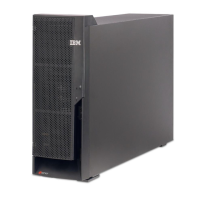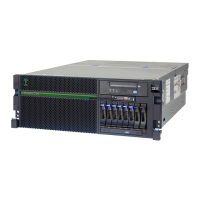i5/OS and OS/400 (5722-SS1): Architecture 547
Draft Document for Review October 18, 2004 5486OpS.fm
Suggested reading
For additional information about logical partitioning, see:
http://www.ibm.com/servers/eserver/iseries/lpar
http://www-1.ibm.com/servers/eserver/iseries/service/itc
iSeries clustering
A cluster is a group of independent servers that appears on a network as a single
machine. It is a collection of complete systems that work together to provide a
single unified computing resource.
Today, iSeries clusters enable you to set up an environment to provide availability
beyond 99.94% for critical applications and critical data. iSeries server high
availability business partners and Solution Developers complete the solution with
easy-to-use cluster management, robust data resiliency, and resilient
applications that take advantage of the new technology.
IASPs offer significant functions that allow even more flexibility and improved
availability. Data residing in IASPs can be switched between servers using HSL
OptiConnect loop. IASPs allow you to take data offline and bring data online
independent of the system ASP and other user ASPs. IASPs also support:
Journaling of IFS objects, data areas and data queues, and options to reduce
the amount of data journaled
System services support of HA Switchable Resources, which allows use of
resilient device cluster resource groups that contain IASPs
HSL OptiConnect support as a cluster communications fabric
Options to adjust the tuning and configuration parameters of your cluster to
match better your communications environment
IBM Cluster Management Utility, which allows you to create and manage a
simple four-node, switched disk cluster
See IBM Eserver iSeries Independent ASPs: A Guide to Moving Applications to
IASPs, SG24-6802, and Independent ASP Performance Study on the IBM
Eserver iSeries Server, REDP-3771, for more information about IASPs.
Note: On systems prior to V5R1, the iSeries server offered multisystem
coupling that provides peer or tiered node clusters, constructed by Solution
Developers using distributed data management and journaling. Systems in the
cluster are managed separately by the customer. Database replication is
provided by high-availability business partner solutions. However, this is not
clustering.
